#takes of suspense (1959)
Explore tagged Tumblr posts
Text
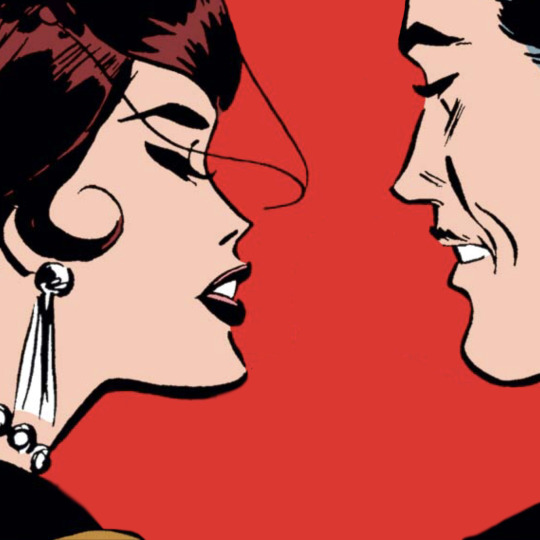
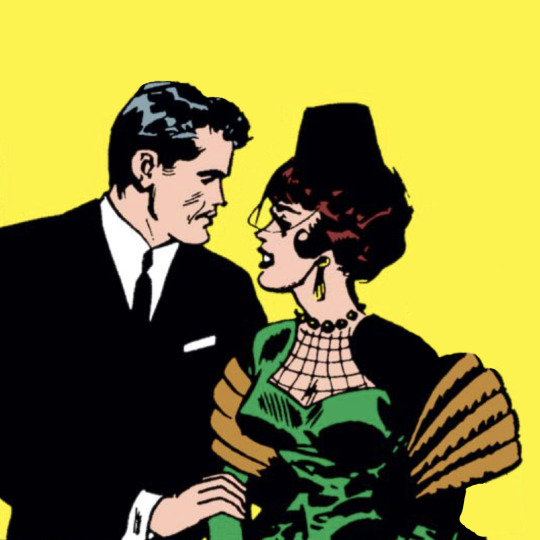
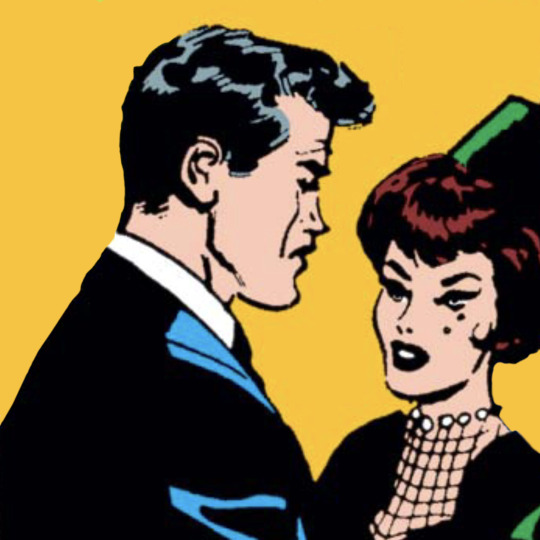

Natasha Romanoff & Tony Stark
Tales of Suspense (1959) #52
#marvel#avengers#marveledit#comicedit#tonystarkedit#ironmanedit#natasharomanoffedit#blackwidowedit#ironwidow#tony stark#iron man#natasha romanoff#black widow#takes of suspense (1959)#616#larry lieber#don heck#marvel comics#avengerscompoundedit
149 notes
·
View notes
Note
hewwo again! (。^ω^。)ノ♡ thank u so much for ur recommendations! I was mostly looking for some good novels cause I feel like I read comics too fast (´ . .̫ . `) but I'll definitely give all of them a look! have a great day and sorry for the long anon asks (am shy) (・ω・)つ
Trying to think of more novel recommendations makes me realize how little I’ve read lately which makes me sad! But I do have a go to novel that I recommend to people. I read it in high school and still own it and think about it to this day!
The Poisonwood Bible by Barbara Kingsolver. It’s about a missionary family that moves to Africa and is VERY much a critique of missionary work. Actually when I went to track down a summary I checked good reads and was surprised to see some negative reviews, until I took a peek at them and it was a bunch of conservatives mad that the book critiques missionary work and America and the patriarchy 😂 anyways, here’s the summary:
“The Poisonwood Bible is a story told by the wife and four daughters of Nathan Price, a fierce, evangelical Baptist who takes his family and mission to the Belgian Congo in 1959. They carry with them everything they believe they will need from home, but soon find that all of it -- from garden seeds to Scripture -- is calamitously transformed on African soil. What follows is a suspenseful epic of one family's tragic undoing and remarkable reconstruction over the course of three decades in postcolonial Africa.”
If you read it (or any of my recommendations) feel free to let me know your thoughts! I love talking about books and comics :3
16 notes
·
View notes
Note
I've been taking your Rosegate masterposts one at a time for now (mostly so I can take my time to chew on them properly) and (I mean this positively) it's crazy how your posts have reframed the way I think about the similarities between the Creel and Wheeler homes !!! I haven't gotten that far yet, so I'm not sure if you've already tackled it, but is the "curse that unfortunately affects the Creels" that you've mentioned something that originated from Ted's mother? How does that fit in with the TFS canon? Sorry if you've made a post about this already, I haven't gotten that far yet through your master posts :")
-Mikepostings anon :D
Hello again Mikeposting anon!! :p
Lol i feel bad now because my rosegate masterpost is a hot mess :3. Now that I think about it, I have development rosegate(tm) so far passed the initial blurb I wrote in 2023 (2022?) on that post so I'm think I might either delete the summary beforehand entirely and just leave the links or update it (eg. granddaddy wheeler is not really a thing in my mind anymore).
When it comes to TFS canon, honestly, I just don't know if i should take take the play at face value. Yeah I know, mighty convenient for me, but there are so many things that just don't make sense, are inconsistent with the show (I mean ted and karen are blonde) (actually idk if karen is actually blonde in TFS but from the shots I've seen it... looks like it? But it just might be the lighting) (and also the characters ages are all over the place), and just seems frankly bizarre compared to the established characters in the show (eg lonnies character). That is not to say that I believe TFS is meaningless, it's clearly full of easter eggs and hidden meanings, and canon per the ST writers twitter account. But I don't think what we see in TFS is meant to be a 100% accurate portrayal of the events of 1959 hawkins but rather something akin to an alternate, perverted version of events in a show full of references to "timelines", "timeloops", "lies", and "truth" etc etc.
Also just, Henry voice "a silly terrible play". Which could mean nothing!
(And honestly I find it hard to believe that with showrunners that jealously gatekeep spoilers and future plot twists, they would just give away what would be a major plotline for st5 prematurely in a stage show. Every plotline they do give away - the Nevada caves, the rogue scientist, etc- only serves to open up more questions than give answers to build suspense for st5).
So that is to say I don't really have an answer for how rosegate lines up with TFS, so I try to base the theory on the show itself.
It has been pointed out that the actor that portrays (portrayed?) ted in tfs curiously looks like jcb tho 👀 that and all the Changeling references in the creel attic in st4, I wonder whats going on there? And there's the whole thing about eddie repeating 2 school years and teds canon age per the s1e1 screenplay should be 20/21 in 1959 but he's a high school senior. Which could also mean nothing!
5 notes
·
View notes
Text
Comics read this past week:
Marvel Comics:
Marvel: Heroes & Legends (1997) #1
This issue was published in September 1997. It was written by James Felder. There were 15 pages penciled by Sal Buscema and inked by Al Milgrom, 13 pages drawn by Dick Ayers, 10 pages penciled by Steve Ditko and inked by Steve Leialoha, and 11 pages penciled by Gil Kane and inked by Tom Palmer. All were colored by Chi Wang.
This issue revisits the events of The Avengers (1963) #16, which was published in March 1965. That issue was originally just credited as written by Stan Lee, but The Official Marvel Index to the Avengers (1994) #1 credited Jack Kirby as a co-plotter. The layouts were drawn by Jack Kirby, which were finished by Dick Ayers (though the Grand Comics Database says that Carl Hubbell may have made some alterations). It was 20 pages.
In that story the concept of some people leaving the Avengers was first raised when Janet said, “Why don’t all of us take a leave of absence? Everybody deserves a vacation sometime! I-I’d like to lead a normal life for a while- just like anybody else! I’m tired of all this fighting- this constant danger and turmoil!” Hank responded, “I’m a fool, honey! I never thought how tough it must be for you!” And Tony said, “For all of us, Giant-Man! Even I wish it would end some day!”
In this story, before anyone else suggests anything, Tony says to himself, “Come to think of it- the proud and noble Sub-Mariner might be a great addition to the mighty Avengers! Or, a great replacement- for the years have taken their toll on me! What’s happening to me? Why do I keep thinking of abandoning the Avengers? No! I’d never abandon them! I just need a break- a rest- time to get my life together! I’ve still got my company to run… thousands of employees depending on me! I can’t ever let them down!”
There’s also a scene in this issue where Clint, still a wanted criminal, rushes an injured Natasha to the hospital, then thinks when he hears that the Avengers may have to disband entirely because so many members are leaving, “If America’s mightiest team is having problems- Hawkeye and the Black Widow might just be the answer!” I think this is actually a great concept, a solid way to bridge the gap in the differences in their portrayals in The Avengers (1963) #16 and when we had last previously seen them, in the Iron Man story in Tales of Suspense (1959) #64.
In the Iron Man story Natasha’s parents were threatened by someone who was implied to be Nikita Khrushchev, unless she finally completed her mission to destroy Iron Man. Clint didn’t want to betray the U.S., but he loved Natasha and wanted to help her, so he accepted that destroying just Iron Man wasn’t really betraying the country. In the battle Natasha was injured, and Clint abandoned fighting Iron Man to help her, even though she argued with him, saying, “No! No! Go back.. finish him off… Go back!!” And then, “You fool! You had your chance… now it’s too late! Because of your love… I’ve failed again!!”
In The Avengers (1963) #16 Clint explains to the Avengers that Natasha was injured, but not in the fight with Iron Man, which seemingly happened a while ago, but that “just one week ago, they made her pay the price for trying to desert her red masters!” And Clint claims he didn’t go with Natasha to the hospital, “She was still alive when they took her away! I didn’t try to learn what happened after that! I- I was afraid to find out!” This is opposed to him sneaking into Natasha’s hospital room so that he can be with her even though he’s a wanted criminal, as Clint does in this issue.
And in that telling in The Avengers (1963) #16 Clint vowed to the unconscious Natasha, “I’ll make up for what we’ve done! I’ll devote my life to making amends!” But I think it makes more sense for Clint to want Natasha to be with him and to also be doing good with the Avengers. When Natasha next appeared, in The Avengers (1963) #29, she’d been brainwashed into serving the Soviet Union, with them presumably having giving up on her succeeding in her missions otherwise. Clint was still in love with her, and once she broke free from the brainwashing, he was pretty determined in trying to get the other Avengers to let her join the team.
Before they reunited in the Iron Man story in Tales of Suspense (1959) #64, Clint had assumed, of Natasha being forcibly taken back to Russia at the end of their preceding appearance in Tales of Suspense (1959) #60, that she had “deserted” him. Possibly the version of Clint in this issue will assume that she willingly left the hospital while he went to join the Avengers because she was angry with him over him failing to destroy Iron Man, and maybe she even did before she was recaptured by agents of the Soviet Union. Also, that Clint had willfully deserted Natasha in the original version of him joining the Avengers reads strangely with that he was later wistful about her before he found out she’d been brainwashed and was a villain.
Also, as Pietro and Wanda are on their way to New York, Pietro complains when he learns that they’ll have to wear their costumes and be seen by the press when they arrive, saying, “We are not circus performers!” Wanda tells him, “You protest too much, Pietro! In America, we must do as the Americans do. I shall be proud to wear my costume! Remember, my brother- no matter how crass and commercial the Americans may seem… they still offer the greatest gift of all- the gift of freedom!”
And the Teen Brigade gets upset when Rick isn’t announced as one of the new Avengers. One member says, “We ought’a picket the Avengers!” Another agrees, “Yeah, right! They’re unfair to teenagers!” This reminded me of Young Justice: Sins of Youth (2000) #1 when the team complained about media hysteria around teenage superheroes.
Timely Publications:
the Captain America stories in Captain America Comics (1941) #25
These 2 stories were published in an issue cover dated April 1943. They were 17 and 21 pages.
In the story “Captain America: The Murdering Mummy and the Laughing Sphinx” (writer unknown; penciled by Carmine Infantino; possibly inked by Vince Alascia) in Captain America Comics #25 as Bucky is leaving a library, where he was looking for information for a case, a passerby says, “Hi, Bucky! Haven’t seen you for ages!” Bucky says, “Hello, Red! Still studying archaeology?” And the red-headed young man says, “Sure- under Prof. Jameson, a famous master! He just returned from Egypt where he made an important discovery about an ancient tomb of some evil demon- Modebl.” It’s been a while since we’ve seen Bucky have friends closer to his own age outside of the military base. I wonder how he met this college student.
In the course of their investigation, Steve and Bucky find a vial with a note that reads, “If you would penetrate the veil. Think well of what you seek, and quaff deep the sacred lotion!” Bucky is worried and doesn’t want him to do it, but Steve says, “Keep your courage, kid! This may be the solution to the whole mystery! Those ancient peoples did things with mind and matter that our modern scientists could only guess at!” Steve ends up having a vision where a demon tells him, “There is but one return for you- to carry the curse of the mummy- and to spread it! That, I, Modebl, may rule!” When Steve refuses, the demon says, “Then you shall die and your soul will sign!” Steve says afterwards, “If I had swallowed that stuff from the vial, instead of sipping it, it would have [gone crazy]- that’s concentrated opium! A couple of drops of that would eat away your whole brain!”
DC Comics:
Batman: Harley Quinn (1999) #1
This issue was published in August 1999. It was written by Paul Dini, penciled by Yvel Guichet, inked by Aaron Sowd, and colored by Richard Horie and Tanya Horie. It was 48 pages.
This issue is actually Harley’s first appearance in a comic book. She first appeared in the Batman: The Animated Series episode “Joker’s Favor,” which first aired in September 1992.
the Harley Quinn and Poison Ivy story in Batman: Gotham Knights (2000) #14
This story was titled “The Bet” and was in an issue published in February 2001. It was written by Paul Dini, drawn by Ronnie Del Carmen, and colored by Zylonol. It was 8 pages.
I really did not care for how Poison Ivy in particular was characterized in this story.
the Harley Quinn story in Batman: Gotham Knights (2000) #30
This story was titled “Punchline” and was in an issue published in June 2002. It was written by Doug Alexander, drawn by Rob Haynes, and colored by David Self. It was 8 pages.
Detective Comics (1937) #831
This issue was published in April 2007. It was written by Paul Dini, penciled by Don Kramer, inked by Wayne Faucher, and colored by John Kalisz. It was 22 pages.
Detective Comics (1937) #837
This issue was published in October 2007. It was written by Paul Dini, penciled by Don Kramer, inked by Wayne Faucher, and colored by John Kalisz. It was 22 pages.
In this story Harley is working as the assistant director of the Metropolis branch of the Athenian Women’s Help Shelters, which men aren’t allowed inside of. She explains, “I thought I might put my psychiatry degree to good use. Maybe find a charity clinic someplace run by indiscriminating types who didn’t check backgrounds too closely.” The organization has a mission of “peace and tolerance.” The women all wear Ancient Greece-style clothing and are taught things like, “The Amazon way is the way of the Goddess. The Goddess is peace. The Goddess is power. Hail, wise Athena, from whom all blessings…” And “the spa’s water comes from a magic fountain on Paradise Island. It bestows healing, strength, and stamina.” At the end of the issue it’s revealed that the woman running the shelter is actually a villain, but that’s not resolved within this story.
This made me think of how Diana was depicted working as an ambassador in Greg Rucka’s Wonder Woman run, which I liked.
The plot is that Bruce Wayne hires Edward Nygma, retired from being a criminal as the Riddler and now trying to make it work as a private detective, to find a Wayne Enterprises employee who ran off with a confidential experimental serum. Edward needs Harleen’s help to do the job because the employee is hiding out at the shelter. At the end of the story Tim says to Bruce, “Admit it, you’re angry he succeeded.” Bruce responds, “I’m not angry.” And Tim says, “You’re always kind of angry. And now that the Riddler has come through, you’re downright irate.” Bruce explains that he was only trying to see if Edward would also be able to find the serum, and that from there “There was little doubt. Riddler knew the fee he’d collect from Wayne was more than he’d get trying to fence the serum,” so it’s not that he trusts Edward now, but that “the more content the rat, the less likely he’ll leave his hole.”
I like this characterization for Bruce- kind of a jerk, and not exactly jumping for joy or optimistic about one of his enemies reforming, but also at least able to have this conversation with Tim without directing his anger at Tim.
Joker’s Asylum II: Harley Quinn (2010) #1
This issue was published in June 2010. It was written by James Patrick, drawn by Joe Quinones, and colored by Alex Sinclair. It was 22 pages.
I particularly liked Harley’s voice in this story. And Joe Quinones is a well-matched artist for her.
the Harley Quinn story in Batman Black and White (2013) #1
This story was titled “Justice is Served” and was in an issue published in September 2013. It was written by Maris Wicks and drawn (and later colored) by Joe Quinones. It was 8 pages.
the Harley Quinn and Poison Ivy story in Batman Black and White (2013) #3
This story was titled “Role Models” and was in an issue published in November 2013. It was written by Paul Dini and drawn by Stéphane Roux. It was 8 pages.
the Harley Quinn story in Legends of Dark Knight 100-Page Super Spectacular (2014) #1
This story was titled “Dr. Quinzel’s Diagnosis” and was in an issue published in December 2013. It was written by Jim Zub, drawn by Neil Googe, and colored by Kathryn Layno. It was 20 pages.
Detective Comics (2011) #23.2
This issue was published in September 2013. It was written by Matt Kindt, drawn by Neil Googe, and colored by Will Quintana. It was 20 pages.
Neil Googe’s art worked a lot better for me in this story than in “Dr. Quinzel’s Diagnosis.”
the story “Head Games” in Batman Black and White (2013) #1
This story was in an issue published in September 2013. It was written by Howard Mackie and drawn by Chris Samnee. It was 8 pages.
This story was on my radar because I was really impressed with Howard Mackie’s writing in Ghost Rider/Captain America: Fear (1992) and wanted to try out some of his other work, but I’m not interested in reading Ghost Rider comics right now. I enjoyed his writing again here.
Interestingly, it’s noted that this is Chris Samnee’s first official Batman story. He’s associated with the character online because of the popular drawings he does every October for the self-imposed challenge Batober. But this story was the only time he had drawn interior pages for a published Batman comic before Batman & Robin: Year One (2024) #1 came out in October 2024.
the story “The Wilt” in Batman 80-Page Giant 2010 (2011) #1
This story was in an issue published in December 2010. It was written by Simon Spurrier, drawn by Chris Samnee, and colored by John Kalisz. It was 9 pages.
For completionism’s sake I thought I’d read Chris Samnee’s one other official Batman-related story. This is a Poison Ivy story that neither Batman or Bruce Wayne appears in.
I found the way this story was written very compelling. If there are more Poison Ivy comics like this then I would be interested in getting into the character.
Fawcett Comics:
the Captain Marvel stories in Whiz Comics (1940) #102 and Captain Marvel Adventures (1941) #89 and The Marvel Family (1945) #28
These 7 stories were published in issues cover dated October 1948. They were 7 to 9 pages.
The story “The Marvel Family in Captain Marvel’s Dilemma” (written by Bill Woolfolk; drawn by Kurt Schaffenberger) in The Marvel Family #28 has Sivana be inspired by watching a play called “Road to Madness,” with him saying, “What a wonderful idea! Her husband makes her think she’s crazy, so he’ll be free to find the hidden jewels that are hidden in the house! Why can’t I use the same methods against that big red cheese- Captain Marvel? Heh-heh! I’ll do it!” This is obviously based on the story of the 1938 play “Gas Light,” which was adapted into a movie in the U.S. in 1944.
The story “Captain Marvel Faces Fear” (written by Bill Woolfolk; penciled by C.C. Beck; inked by Pete Constanza) in Captain Marvel Adventures #89 is another story about atomic energy. In it an atomic engine is ditched by a delivery boy who thought it was an atomic bomb. Though Captain Marvel tries to explain, “It’s an atomic engine that’s missing! It merely employs the principle of atomic energy without any of the harmful effects! You’re perfectly safe,” the people still panic, believing there to be a dangerous bomb somewhere in their city. The villain of the story is the personification of fear. At the end, as Captain Marvel is fighting him, Fear says, “Since the beginning of time I have existed only in the minds of people who have not known the truth! For those you know the truth… I don’t exist at all!” And he vanishes into thin air. And then Billy interviews the inventor of the atomic engine on his radio show, and the scientist says, “my invention was perfectly harmless all the time! The panic came from fear, and fear thrives on ignorance! When men learn the facts, unreasoning fear and all its terrors disappear forever.”
In the story “Captain Marvel Fights Silent Sound” (written by Otto Binder; penciled by C.C. Beck; inked by Pete Constanza) in Captain Marvel Adventures #89 after Sivana declares on the radio that he’s going to set Station Whiz on fire, does so, and then successfully escapes, the narration says, “The next day Billy spends all his spare time at the Whiz listening post.” The last time I can remember Billy spending his spare time listening to radio transmissions was back during WWII.
3 notes
·
View notes
Text
Mothergate: Time For Some More Horrifying Science Facts
Because all love my horrible science facts <3
We’ve discussed the history of uterine transplants, and pinned down that it’s 100% possible with zero suspension of disbelief. Uterine transplants were attempted in 1931 most notably with Lili Elbe, who died of immune complications, not complications of the surgery. The first successful kidney transplant, however, happened in 1954, which puts us perfectly in the realm of reality (again, without any suspension of disbelief).
However, something that had been stumping me for a bit was the fact that egg freezing and IVF didn’t really show up in the medical community until the ‘80s. So, I decided to look a little deeper into the history of the subjects. Here’s what I found.
IVF:
Though the first successful human IVF procedure happened in 1978 with the birth of Louise Brown, experimentation with IVF dates back to the mid 1930s.

(x)
However, there was success in rabbits in 1959.
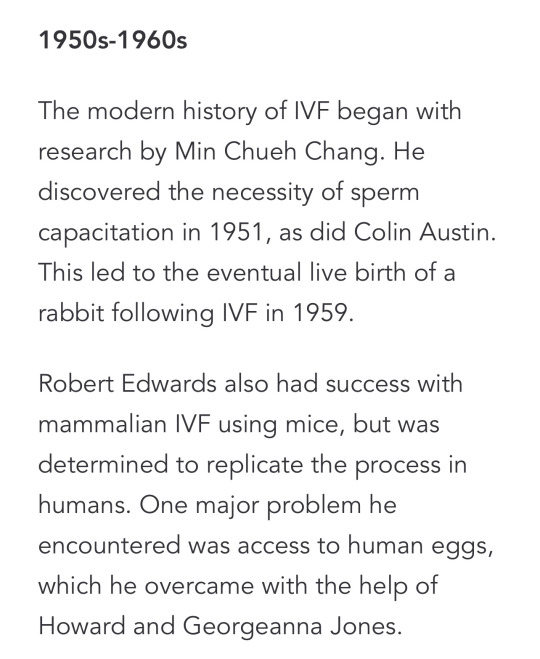

This has been confirmed by multiple sources (x)
Rabbits. 1959.
(and in Brenner’s Encyclopedia of Genetics, no less 💀)
Here’s why I care more about early success in animals than I do about the first successful human cases:
1. Brenner has no code of ethics, which is integral to the medical community at large. That’s why procedures takes so long to get put into practice. Brenner’s whole thing is no-ethics fringe science. He cares about what is possible, not what’s right or safe.
2. Henward directly refers to both himself and El as being “animals” in Brenner’s eyes. Thus, animal trials are on the board.
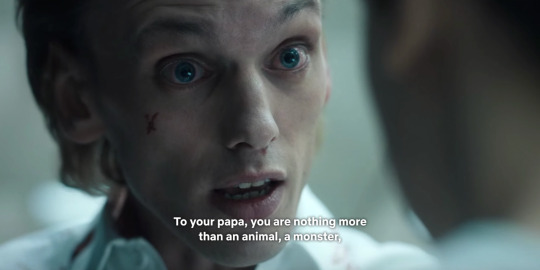
3. The rabbit scene, 1959.

Not just the fact that it’s a trapped rabbit in 1959 associated with Henward, but that Virginia (removed/from a distance) and Alice (directly) are associated with that particular rabbit.
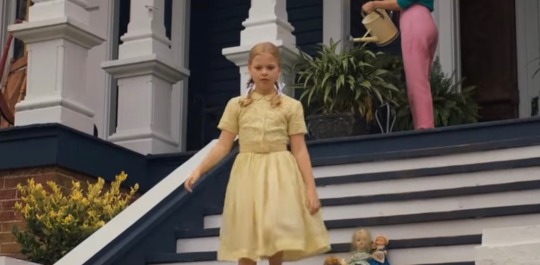
In fact, the gutted rabbit is most heavily associated with Alice, which feels like a tie to Mother Alice being described as being cut open in the Indianapolis Gazette (she was compared to a deer, but the “torn open” part remains the same).
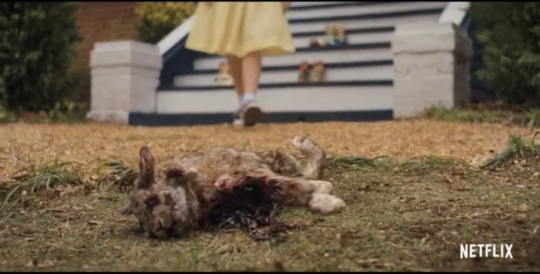

So organ/uterine transplants and IVF? ✅ In the realm of possibility both in reality and within the bounds of Stranger Things.
SEX CELL FREEZING:
Sex cell freezing began in 1949 with the discovery of glycerol as a cryoprotectant. In 1950, scientists began freezing various sperm samples and found success in the process. Egg freezing, however, wasn’t successful until 1972, when Whittingham/Leibo/Mazur perfected the slow-freeze method in mouse eggs.
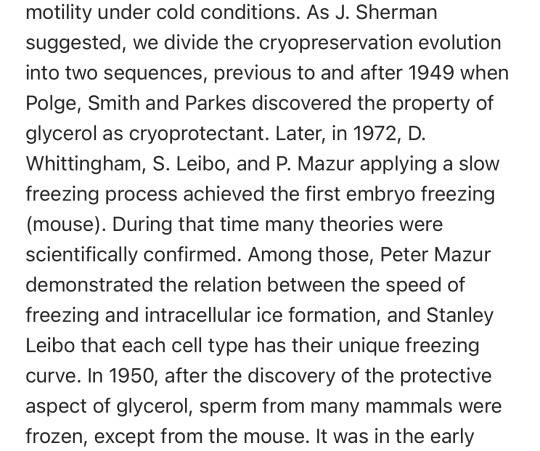
Now you might be going “but James, that means it can’t have happened back in 1959, and that dismantles your whole theory”…Not necessarily.
Bear with me for a second. We’re talking about Hawkins National Lab, a lab on a TV show about a fictional town with kids who have superpowers. We’re talking about the lab that developed NINA, the lab that developed Soteria. 1972 is just 13 years after Henward was stolen. That’s when it happened in real life. We’re in a fictional universe. IVF and egg preservation were dreamed up by Huxley in 1934 with the release of A Brave New World. Suspend your disbelief for a moment.
Could it happen? Abso-fucking-lutely.
Hell, Henward directly equates both himself and El with lab rats in Brenner’s eyes:
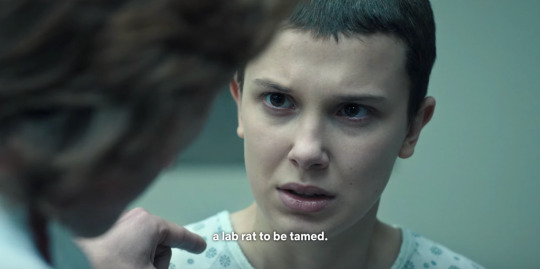
Rats -> Mice? Same difference.
All this to say…the science of it?
Henward’s monologue also uses scientific terminology associated with breeding programs:
In which backcrossing with parents is a common practice:
As is performance testing of offspring to determine the best new reproductive candidates.
Paired with the in-universe references…This is all within the realm of possibility.
33 notes
·
View notes
Text
The Poisonwood Bible is a story told by the wife and four daughters of Nathan Price, a fierce, evangelical Baptist who takes his family and mission to the Belgian Congo in 1959. They carry with them everything they believe they will need from home, but soon find that all of it -- from garden seeds to Scripture -- is calamitously transformed on African soil. What follows is a suspenseful epic of one family's tragic undoing and remarkable reconstruction over the course of three decades in postcolonial Africa.
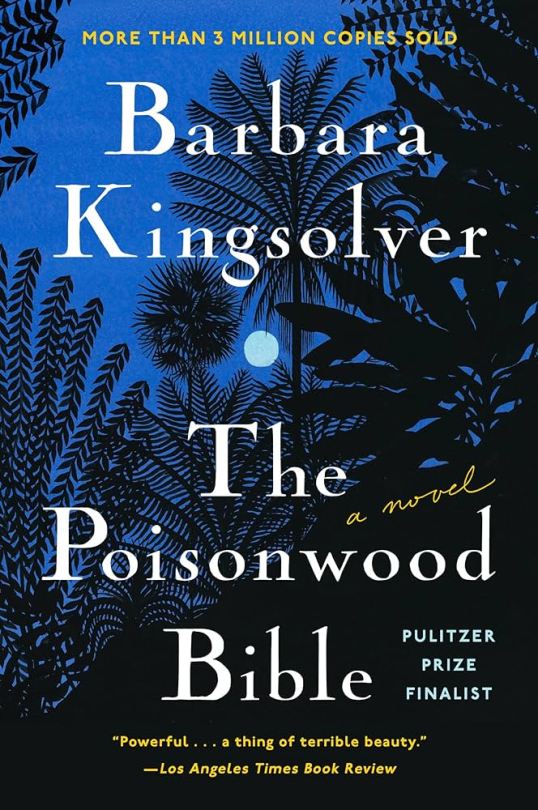
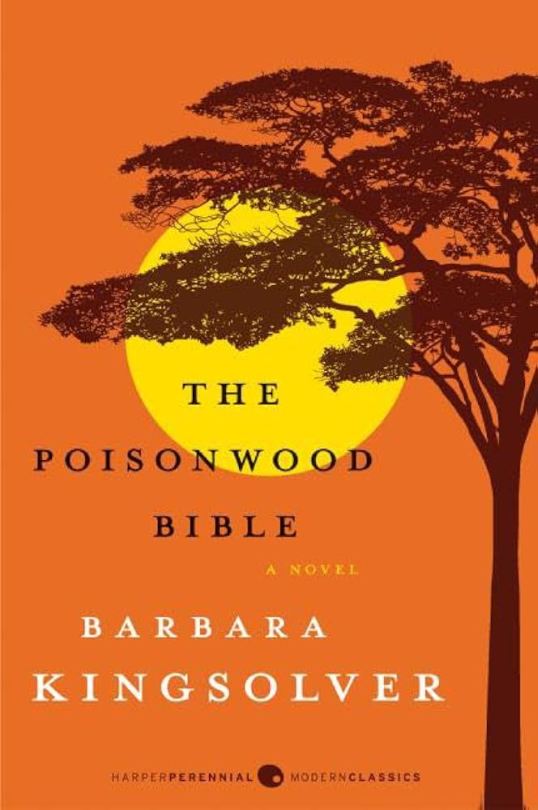
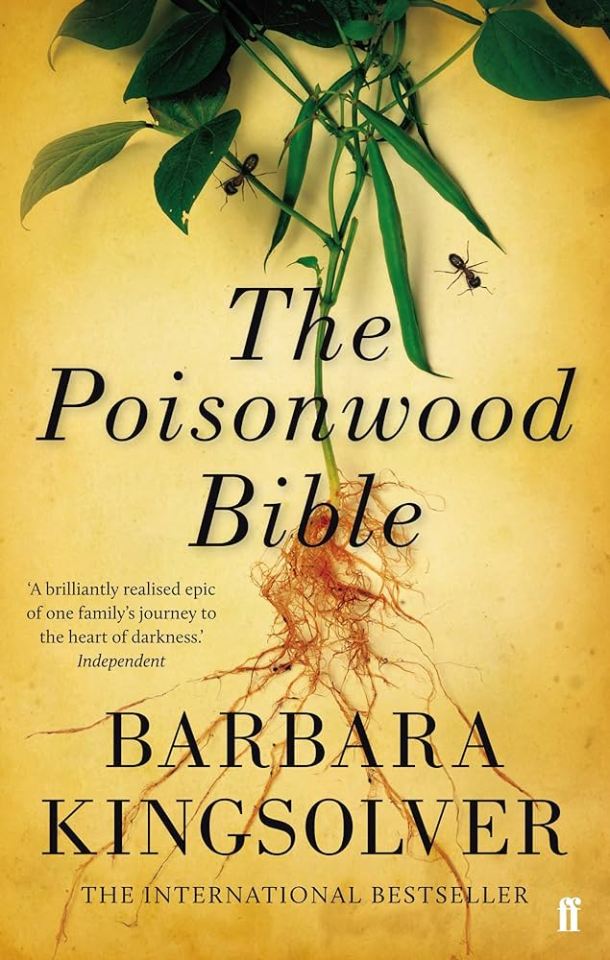
#book: the poisonwood bible#author: barbara kingsolver#genre: historical fiction#genre: african literature#genre: classics#year: 1990s
5 notes
·
View notes
Text
Top 10 horror movies of the 50's

The 1950s was a pivotal decade for horror films, marked by a blend of science fiction elements and societal anxieties, particularly surrounding nuclear fears and the Cold War. Here are ten notable horror movies from that era:
Invasion of the Body Snatchers (1956) This film explores themes of conformity and paranoia as an alien race infiltrates a small town, replacing its residents with emotionless duplicates. Its commentary on societal fears during the Cold War has made it a classic in the genre.
The Blob (1958) An iconic B-movie featuring a gelatinous alien creature that devours everything in its path, The Blob reflects the anxieties of alien invasion and the unknown. Its campy style has contributed to its enduring popularity.
Creature from the Black Lagoon (1954) This film introduces a half-human, half-amphibian creature lurking in the Amazon. It combines adventure with horror, showcasing Ray Harryhausen's special effects that captivated audiences at the time.
House on Haunted Hill (1959) Vincent Price stars as an eccentric millionaire who invites guests to spend a night in a haunted house, promising them money if they survive. The film is known for its suspenseful atmosphere and innovative marketing gimmicks.
5. Horror of Dracula (1958)
This Hammer Horror film revitalized the Dracula legend with Christopher Lee's seductive portrayal of the Count. It introduced a more visceral and sensual take on the vampire mythos, influencing subsequent adaptations.
Curse of the Demon (1957) A psychological horror film about a skeptic who confronts real supernatural forces after being cursed by a satanic cult leader. Its blend of rationality and the supernatural creates a chilling narrative.
The Beast from 20,000 Fathoms (1953) A dinosaur awakened by nuclear testing wreaks havoc in New York City, symbolizing fears associated with atomic power. This film is notable for its pioneering special effects by Ray Harryhausen.
The Thing from Another World (1951) Set in an Arctic research station, this film features an alien creature that terrorizes scientists, reflecting Cold War fears about invasion and the unknown. Its influence can be seen in many later sci-fi horror films.
Diabolique (1955) A psychological thriller about two women conspiring to murder a cruel schoolmaster, this film is renowned for its suspenseful plot twists and has been highly influential in the thriller genre.
The Incredible Shrinking Man (1957) This film combines horror with existential dread as a man shrinks to a minuscule size after exposure to radioactive mist, facing dangers from everyday objects now magnified in his new perspective.
These films not only entertained audiences but also reflected deeper societal fears and anxieties prevalent during the 1950s, making them significant contributions to the horror genre.
2 notes
·
View notes
Text

Halloween is just around the corner, and what better way to celebrate the spooky season than with a movie marathon filled with spine-tingling chills and eerie adventures? Whether you're gathering with friends, family, or looking for a solo scare fest, our handpicked selection of Halloween and fall-themed movies has got you covered. From classic horror to animated tales and everything in between, this ultimate movie guide will take your Halloween and Fall-filled experience to new heights.
---
Animated: Cartoons for the Playful Spook: Dive into the enchanting world of animated Halloween tales. From mischievous chipmunks to lovable monsters, our collection of animated movies offers the perfect blend of humour and spooky fun. Explore the ghoulish adventures of Alvin and the Chipmunks, embark on a journey through the afterlife in "Coco," and unravel the mysteries of haunted houses with beloved characters like Casper the Friendly Ghost.
Alvin and the Chipmunks Meet Frankenstein
Alvin and the Chipmunks Meet the Wolfman
Corpse Bride
Coraline
Coco
Fun Size
Frankenweenie
Hotel Transylvania
Hotel Transylvania 2
Hotel Transylvania: Summer Vacation
Hotel Transylvania: Transformania
It's the Great Pumpkin, Charlie Brown
Monster House
ParaNorman
Scoob! (2020)
Scooby-Doo and the Ghoul School
Scooby-Doo and the Reluctant Werewolf
Spirited Away
The Addams Family (2019)
The Nightmare Before Christmas
Wallace & Gromit: The Curse of the Were-Rabbit
---
Live Action: Live Action Thrills: For those seeking heart-pounding excitement and hair-raising suspense, our live-action movie suggestions are sure to deliver. From Tim Burton's signature dark fantasy style to iconic horror franchises, you'll find a variety of options to keep you on the edge of your seat. Immerse yourself in the quirky world of "Beetlejuice," and revisit the supernatural charm of "Hocus Pocus."
Abbott and Costello Meet Frankenstein
Annabelle
Annabelle Comes Home
Annabelle: Creation
Beetlejuice
Bram Stoker's Dracula
Carrie
Casper
Creepshow
Dark Shadows
Day Shift
Death Becomes Her
Double, Double, Toil & Trouble
Donnie Darko
Edward Scissorhands
Fido
Ghostbusters
Ghostbusters 2
Get Out
Goosebumps
Goosebumps 2
Halloweentown (1-4)
Hereditary
Hocus Pocus
Hocus Pocus 2
Interview with the Vampire
Muppets Haunted Mansion
Practical Magic
Shaun of the Dead
Sleepy Hollow
The Addams Family
The Addams Family Values
The Craft
The Curse of Bridge Hollow
The Haunted Mansion
The Little Vampire
The Love Witch
The Munsters (2022)
The Rocky Horror Picture Show
The Rocky Horror Picture Show (2016)
The Witches (1990/2020)
The Witch
Twilight (Series)
Vampires Suck
Warm Bodies
What We Do in the Shadows
Zombieland
Zombieland 2 ---
Vintage Horror: Vintage Chills and Classic Horrors: Step back in time with a selection of vintage horror films that have stood the test of time. Experience the captivating performances of horror legends like Vincent Price and Boris Karloff in classics such as "House on Haunted Hill" and "The Mummy." Journey into the eerie worlds created by Alfred Hitchcock in "Psycho" and explore the timeless terror of "Dracula" and "Frankenstein."
A Nightmare on Elm Street
Abbott and Costello Meet Frankenstein
Arsenic and Old Lace
Bride of Frankenstein
Carrie
Child's Play
Comedy of Terrors (1963)
Creature from the Black Lagoon
Dr. Jekyll and Mr. Hyde (1931)
Dracula (1931)
House of Wax (1953)
House on Haunted Hill (1959)
Invasion of the Body Snatchers (1956)
Labyrinth
Night of the Living Dead (1968)
Psycho
Tales from the Crypt
The Birds
The Cabinet of Dr. Caligari (1920)
The Exorcist
The Invisible Man
The Last Man on Earth (1964)
The Mummy (1932)
The Shining
The Wolf Man (1941)
The Blob ---
Horror: Modern Scares for the Brave: Ready to be spooked by more recent releases? Our modern horror movie picks will satisfy your craving for contemporary scares. Immerse yourself in the psychological depths of "Hereditary," navigate the terrors of found-footage in "The Blair Witch Project," and experience the relentless pursuit of a masked killer in "You're Next."
A Nightmare on Elm Street (2010)
All Hallows Eve
Annabelle
Annabelle Comes Home
Annabelle: Creation
Cabin in the Woods
Child's Play
Get Out
Halloween (Series)
Hereditary
Insidious
IT
Midsommar
Psycho (1998)
Rosemary's Baby
Scary Stories to Tell in the Dark
Silence of the Lambs
Sinister
The Babadook
The Blair Witch Project
The Conjuring
The Conjuring 2
The Hills Have Eyes (1977)
The Nun
The Ring
The Texas Chainsaw Massacre
Trick 'r Treat
Us
You're Next With this carefully curated collection of Halloween and fall-themed movies, you're all set for a spooktacular movie marathon! Whether you're in the mood for animated delights, vintage scares, modern horror, or family-friendly fun, there's a movie for every preference and every scare threshold. So, gather your loved ones, prepare the popcorn, and get ready to embark on a cinematic journey that will leave you delightfully haunted and thoroughly entertained this Halloween season. Watching these movies alone? Read this: Looking to pair these movies with an activity? Check out our activity and date ideas.
SEE MORE HERE
#christmas#xmas#fall#autumn#winter#spring#summer#cozy#cosy#hygge#cottage core#anxiety#depression#safe space#seasonal blog
10 notes
·
View notes
Text
High School Lit Tournament Side C

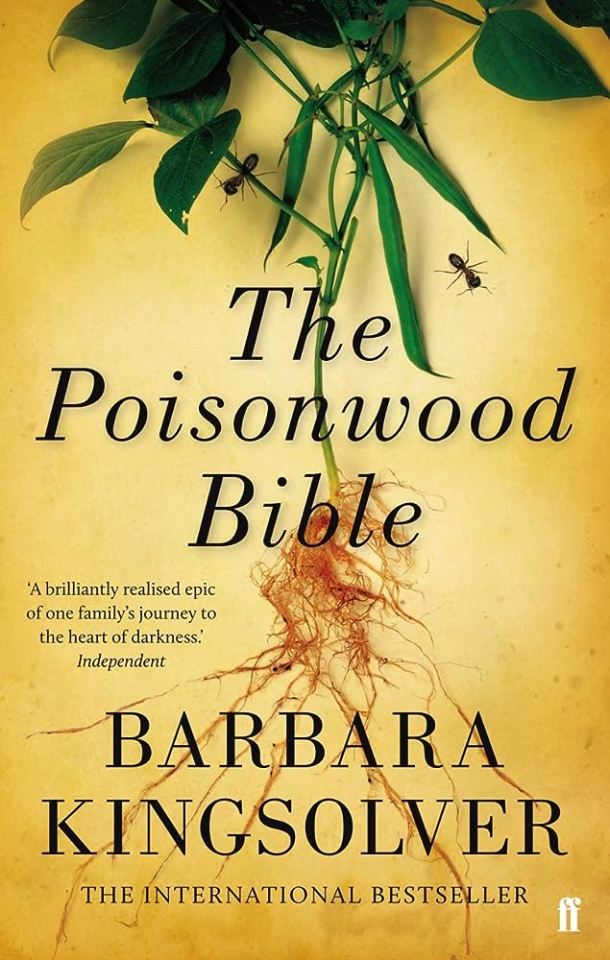
The Poisonwood Bible: The Poisonwood Bible is a story told by the wife and four daughters of Nathan Price, a fierce, evangelical Baptist who takes his family and mission to the Belgian Congo in 1959. They carry with them everything they believe they will need from home, but soon find that all of it -- from garden seeds to Scripture -- is calamitously transformed on African soil. What follows is a suspenseful epic of one family's tragic undoing and remarkable reconstruction over the course of three decades in postcolonial Africa.
Heart of Darkness: Heart of Darkness, a novel by Joseph Conrad, was originally a three-part series in Blackwood's Magazine in 1899. It is a story within a story, following a character named Charlie Marlow, who recounts his adventure to a group of men onboard an anchored ship. The story told is of his early life as a ferry boat captain. Although his job was to transport ivory downriver, Charlie develops an interest in investing an ivory procurement agent, Kurtz, who is employed by the government. Preceded by his reputation as a brilliant emissary of progress, Kurtz has now established himself as a god among the natives in “one of the darkest places on earth.” Marlow suspects something else of Kurtz: he has gone mad. A reflection on corruptive European colonialism and a journey into the nightmare psyche of one of the corrupted, Heart of Darkness is considered one of the most influential works ever written.
7 notes
·
View notes
Text
Top Thirteen Thursday
It's spooky season and while it has been some time since my last post. So let's make a change about that! Have some of my Top Thirteen movies, more or less ;) to watch for Halloween in no particular order. As always feel free to buy me a coffee and to leave your favorite Halloween movies in the comments!
The Canterville Ghost (1996) staring Sir Patrick Stewart. This is an easy and mild movie for Halloween but a classic non the less.
2. Winchester (2018). This another fairly mild movie with a rating of PG-13 that has some well placed jump scares and tense moments, overall a more story driven movie with supernatural/ghost elements.
3. Tower of Terror (1997). This is a Disney movie and honestly just a lot of good fun, it is not rated oddly enough though I can't really see it being rated more than PG-13 at most.
4. What Lies Beneath (2000). Rated PG-13 and staring Harrison Ford. This is more of a psychological supernatural story. Fun fact is that it's screenplay was written by Clark Gregg so that's cool!
5. When A Stranger Call (1979 rated R & 2006 rated PG-13). So speaking of Clark Gregg, he shows up momentarily in the 2006 version of this movie. Both of these versions are a good suspense thriller as the protagonist tries to stay alive with killer playing cat and mouse with them. Also When a Stranger Calls Back (1993 rated R) is worth a look if you like the 1979 movie.
6. Dream House (2011). Rated PG-13 staring Daniel Craig, Rachel Weisz, and Naomi Watts. A simple plot with a mystery. The actors do a good job of carrying the story, which yes isn't very deed but it is well executed.
7. Sleepy Hollow (1999). Rated R and staring Johnny Depp. It's a ride wild on Irving's Legend of Sleepy Hollow and slightly odd at times but a good watch and an interesting take on the characters involved.
8. House on Haunted Hill (1959). Not Rated and staring Vincent Price. Five guests in a maybe haunted mansion and murder afoot. Honestly just about anything staring Vincent Price will more than likely fit right on in with the spooky season!
9. A Quiet Place (2018). Rated PG-13 and more of a science fiction suspense than a horror, but let me tell you that had to be the quietest theater full of people ever when I went and saw it with family.
10. The Sixth Sense (1999). Rated PG-13 this movie is a classic with it's famous line of "I see dead people" and if you don't know the twist I most certainly am not going to spoil it.
11. Shutter Island (2010). Rated R and staring Mark Ruffalo, Leonardo DiCaprio, and Ben Kingsley. This is categorized as a Thriller/Mystery and the story that is told has re-watch value to notice all the details that the makers made sure to put in there. I'm not saying a lot here cause I don't want to spoil it but my family when we first watched went right back and watched it immediately again, not because we were confused but because you can get a new experience with knowing eyes the second time around.
12. Stonehearst Asylum (2014). Rated PG-13 and staring Ben Kingsley, Micheal Caine, and David Thewlis. This is a Thriller/Mystery/Horror mix that keeps you on your toes trying to guess what is really going on and who the main character can actually trust.
13. It's the Great Pumpkin Charlie Brown (1966). A classic and only 25 minutes long, I got a rock.
And there you have my Top Thirteen Halloween movies! There is certainly a list I could make of Honorable Mentions, but maybe I'll do that next year... Stay Spooky!
3 notes
·
View notes
Text
“The immature or inexperienced reader seeks only escape. Even when he thinks he is reading for interpretation or some useful moral, he insists that what he reads return him always some pleasant or exciting image of the world or some flattering image of himself.
[…] The inexperienced reader wants the essentially familiar combined with superficial novelty. Each story must have a slightly new setting, twist, or ‘gimmick,’ though the fundamental features of the characters and situations remain the same. He evaluated a story not by its truth but by its twists and turns and surprises, by its suspense or its love interest. He wants his stories to be mainly pleasant. Evil, danger, and misery may appear in them, but not in such a way they need be taken seriously- are felt to be oppressive or permanent. He wants reading which slips easily and smoothly through the mind, requiring little mental effort. Most of all he wants something which helps sustain his fantasy life, providing ready-made daydreams in which he overcomes his limitations, thwarts his enemies, and wins success or fame or the girl.
The discriminating reader, in contrast, takes deeper pleasure in fiction that deals with life significantly than in fictions based on the formulations of escape. He does not reject escape literature, for escape literature need not be cheap or trite. It may be original, witty, absorbing, beautifully written, and artistically constructed. Some of literature’s most enduring masterpieces are essentially escape- Barrie’s Peter Pan and Stevenson’s Treasure Island, for instance. Such reading may be a refreshment for the mind and spirit. For a steady diet, however, he prefers interpretive literature. He knows, moreover, that an exclusive diet of escape, especially of the cruder sorts, has two dangers: (1) it may leave us with merely superficial attitudes toward life; (2) it may actually distort our view of reality and give us false concepts and false expectations.
Fiction, like food, is of different nutritive values. Some is rich in protein and vitamins; it builds bones and sinew. Some is highly agreeable to the taste but not permanently sustaining. Some may be adulterated and actually harmful to our health. Escape fiction is of the latter of the two sorts. The harmless kind bears frankly on the face of what it is. It pretends to be nothing else than pleasant diversion and never asks to be taken seriously. The second kind masquerades under the appearance of interpretation. It pretends to give faithful treatment of life as it is, perhaps even thinks that’s that it does so, but through its shallowness it subtly falsifies life in every line. Such fiction, taken seriously, and without corrective, may give us false notions of reality and lead us to expect from experience what experience does not provide.”
Story and Structure, Laurence Perrine (1959)
2 notes
·
View notes
Text
“THE TEN GRAND”
June 22, 1944
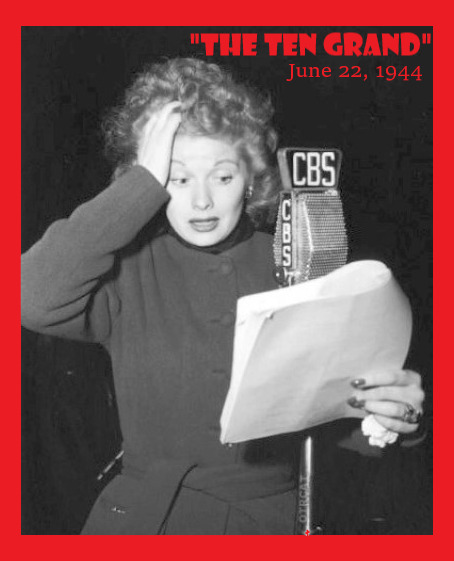
“The Ten Grand” was an episode of radio’s Suspense broadcast on June 22, 1944. The script is by Virginia Radcliffe. It was her only Suspense script in a long radio writing career. She was best recognized for many years of writing for Cavalcade of America. This story was included in Suspense Magazine #3.
The program was produced and directed by William Spier.
Synopsis: A broke chorus girl inexplicably finds ten thousand dollars in her purse after it's been temporarily stolen on the subway. She's not sure what to do about it, and it soon leads to trouble. She has been set up.

Suspense was a radio drama series broadcast on CBS Radio from 1940 through 1962. One of the premier drama programs of the Golden Age of Radio, it was subtitled "radio's outstanding theater of thrills" and focused on suspense thriller-type scripts, usually featuring leading Hollywood actors of the era.

The program was sponsored by Roma Wines, a Cailfornia vintage. Schenley (the makers of Roma) sponsored Suspense from December 02, 1943 to November 20, 1947.
CAST

Lucille Ball (Gigi Lewis) had done a previous episode of Suspense in January 1944 titled “Dime a Dance”. In 1944, Ball was entering her second decade in Hollywood. Ball’s latest film, Meet The People, had been released three weeks before this radio broadcast. Playing a down-on-her-luck chorine was not so far afield for Ball, who was just that before being hired to be a Goldwyn Girl in Hollywood.
In the program, Gigi narrates her own story.
Harry Lang (Wino / Axis Agent) portrayed Pancho on Mutual Radio's "The Cisco Kid". He appeared in 87 films, mostly B pictures and shorts.
Patrick McGeehan (The Greek) was an actor and narrator who frequently was heard on radio, television, and in films.
In the story, Gigi calls him ‘Galahad’ till he reveals his true identity.
John McIntire (Fat Man on the Subway) is probably best remembered for playing the Sheriff in Alfred Hitchcock’s Psycho (1960). From 1959 to 1965 he was a regular on TV’s “Wagon Train”.
Jeanette Nolan (Old Lady on the Subway / Waitress) was a television, radio and film actress whose career spans over seventy years, although she is most remembered for her performances on radio. She made her film debut as Lady Macbeth in the 1948 film Macbeth starring Orson Welles, who also directed. She provided the voice of ‘Mother’ in Psycho (1960).

Joseph Kearns (The Man in Black) briefly played banker Rudolph Atterbury on Lucille Ball’s radio show “My Favorite Husband,” until the role was assumed by Gale Gordon, an actor who would figure prominently in Kearns’ career. He did his first episode of “I Love Lucy” playing psychiatrist Tom Robinson in “The Kleptomaniac” (ILL S1;E27) in 1952. In his second “I Love Lucy” appearance, Kearns played the theatre manager in “Lucy’s Night in Town” (ILL S6;E22) in 1957. In the fall of 1959, he created the role he would be best known for - and would ultimately be his last. Mr. George Wilson on TV’s “Dennis the Menace” appearing in 96 episodes starting with the very first. When he passed away during the show’s final season, his “Our Miss Brooks” co-star Gale Gordon took over for him, playing his brother John.
THE EPISODE
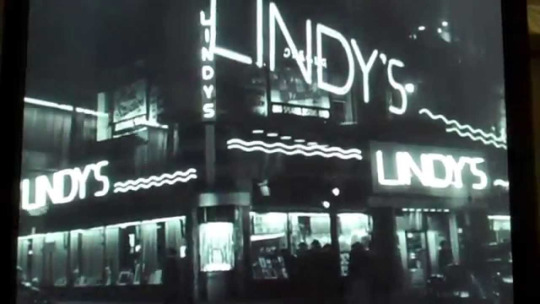
As the program opens, Gigi is standing in front of Lindy’s, a coffee shop on Broadway, dreaming of “a big t-bone steak smothered in onions.” She only has five cents for the subway in her pocket.
Ten years later, Ricky Ricardo takes everyone to Lindy’s when he hears about getting the part of Don Juan during “Ricky’s Contract” (ILL S4;E10).

Gigi is about to reach into her purse for the nickle to board the subway, when she discovers her purse has been snatched. The thief runs away, and a handsome man pursues him, getting the purse back for her. He gallantly returns it to Gigi. The handsome man bids her goodnight, and Gigi opens her purse for the nickle only to find a wad of cash. On the subway, a fat man strikes up a conversation with Gigi, recognizing her from the purse snatching on the platform.
Gigi gazes up at the poster for Miss Subways 1944, dreaming of furs, an apartment downtown, and expensive perfumes. She then considers that the money in her purse might well be counterfiet.

From 1941 to 1976, the women on the Miss Subways posters that lined subway cars and represented the diversity of New York City women: they were of all ethnicities and backgrounds, college students, secretaries, aspiring actresses and singers, as well as wartime nurses.
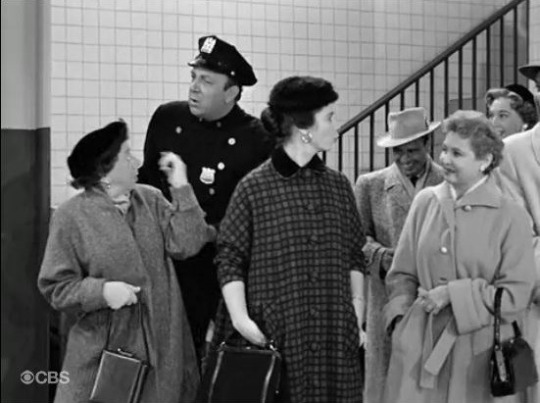
The fat man warns her that plainclothes policemen are in the subway car, which makes Gigi nervous. When the fat man leaves the train, she takes another peek in her purse and finds a note.
Get off at 161st Street and follow Yankee Doodle.
Gigi realizes a man has been whistling “Yankee Doodle Dandy” somewhere in the background. A nervous little old lady sits next to Gigi. She passes out! A man gives her a swig from his bottle and she revives. The little old lady is headed for her sister’s house on 169th Street. She reveals that five years ago someone stole her life savings - about ten grand. She tells GIgi she’ll get the money back someday becuase “It takes a thief to catch a thief.”
Gigi is suspicious that the old lady may be the brains of the operation, and asks her to whistle “Yankee Doodle”. The lady whistles it with a florish, but Gigi realizes it doesn’t help. They hear someone else whistling “Yankee Doodle.” A man who Gigi thinks “may have a slight case of murder on his mind.”
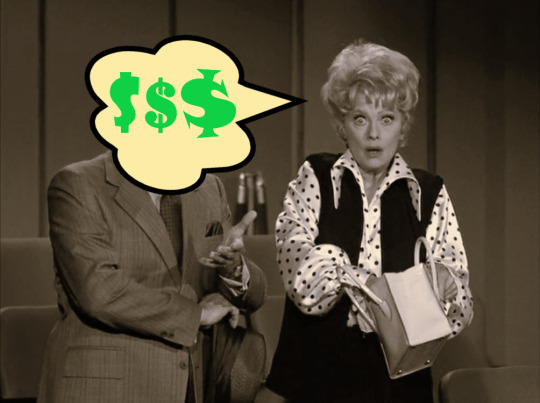
End of Act One
On the subway platform, Gigi keeps an eye out for the handsome stranger, and an ear out for “Yankee Doodle”. A nervous Gigi realizes that someone is ahead of her and behind her.
GIGI: “I’m the ham behind two slices of rye.”
She then sees that a third man is following her from across the street.
GIGI: “I’m a triple-decker sandwich now!”
Gigi realizes the two men are following Yankee Doodle, not her. To make sure her clicking heels don’t give here away, she takes her shoes off. Gigi fantasizes that maybe famous columnist Walter Winchell will be cruising the streets with the cops, getting material for his column, and making her a star by writing about her.
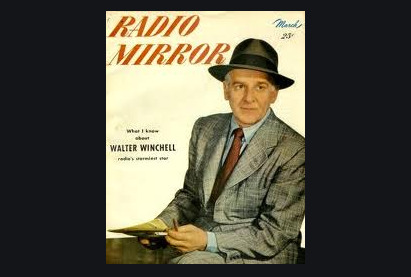
Walter Winchell made his radio debut on May 12, 1930 with a 15-minute feature that provided business news about Broadway. That same year he made his screen debut (based on his column) in the Warner Brothers short film The Bard of Broadway, in which he played himself. In 1933, he appeared as himself in Broadway Thru A Keyhole (aka Walter Winchell’s Broadway Thru a Keyhole), also featuring Lucille Ball. His voice was heard in the 1949 Lucille Ball film Sorrowful Jones and on the Desilu crime series “The Untouchables” (1959-1964).
The handsome suddenly takes her aside into an alley to avoid the two men stalking them. He tells her he is a Greek working to fund his country’s resistance to the Nazis. Gigi decides to distract the two flatfoots with a flashlight. She conks the men on the head with her shoes.
GIGI: “I broke my heel on that heel!”
Fleeing, Gigi and the Greek take refuge in an all-night diner. They both order t-bone steaks - rare with plenty of onions. The man says the money was meant to support the Greek underground and that the two men are Axis agents. He tells Gigi she gets ten percent for her troubles but all Gigi can think about is her t-bone steak! When the waitress returns to their table, she tells them that she forgot it was "meatless Tuesday" so there’s no steaks!
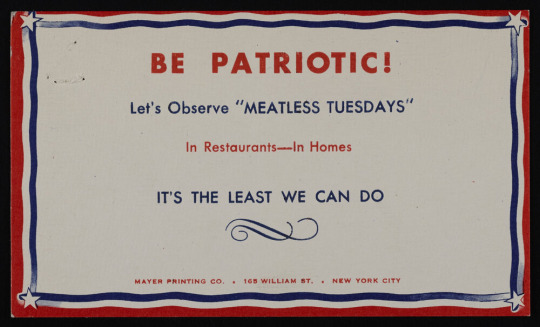
Meatless Tuesdays was a wartime initiative to preserve meat supplies to ensure there would be enough for the armed forces.
End of Episode
After the final commercial, Lucille Ball reports that tonight she said more words per minute than any other actress on the series - but spares a few more words to give a pitch to buy War Bonds.

Lucille Ball appeared through the courtesy of Metro Goldwyn Meyer, producers of The White Cliffs of Dover.
The film featured future “I Love Lucy” guest star Van Johnson, Norma Varden (Mrs. Benson), and an uncredited ten-year-old Elizabeth Taylor, who later appeared as herself on “Here’s Lucy.”

Next week Suspense presents “The Walls Came Tumbling Down” starring Keenan Wynn.
Two years later, in 1946, the Jo Eisenger story was turned into a film by Columbia Pictures starring Lee Bowman, who played George Cugat (later renamed Cooper) in the pilot episode of Lucy’s radio sitcom “My Favorite Husband” (1948). The film also featured Moroni Olsen, who played the Judge in “The Courtroom” (1952). In 1938, Bowman was featured in Next Time I Marry with Lucille Ball.
#The Ten Grand#Suspense#Radio#Lucille Ball#Joseph Kearns#1944#Roma Wines#Miss Subways#Subway#Purse#Money#Virginia Radcliffe#Harry Lang#Patrick McGeehan#John McIntire#Jeanette Nolan#Yankee Doodle Dandy#Meatless Tuesdays#Lindy's#NYC#Walter Winchell
2 notes
·
View notes
Text
















Arrivals & Departures . 18 January 1904 – 29 November 1986 . Archibald Alec Leach . Cary Grant
Cary Grant (born Archibald Alec Leach; ) was an English and American actor. Known for his Mid-Atlantic accent, debonair demeanor, lighthearted approach to acting, and sense of comic timing, he was one of classic Hollywood's definitive leading men. He was nominated twice for the Academy Award, received an Academy Honorary Award in 1970, and received the Kennedy Center Honor in 1981. He was named the second greatest male star of the Golden Age of Hollywood by the American Film Institute in 1999.
Grant was born into an impoverished family in Bristol, where he had an unhappy childhood marked by the absence of his mother and his father's alcoholism. He became attracted to theatre at a young age when he visited the Bristol Hippodrome. At 16, he went as a stage performer with the Pender Troupe for a tour of the US. After a series of successful performances in New York City, he decided to stay there. He established a name for himself in vaudeville in the 1920s and toured the United States before moving to Hollywood in the early 1930s.
Grant initially appeared in crime films and dramas, such as Blonde Venus (1932) and She Done Him Wrong (1933), but later gained renown for his performances in romantic screwball comedies such as The Awful Truth (1937), Bringing Up Baby (1938), His Girl Friday (1940), and The Philadelphia Story (1940). These pictures are frequently cited among the greatest comedy films of all time. Other well-known films in which he starred in this period were the adventure Gunga Din (1939), the dark comedy Arsenic and Old Lace (1944), and the dramas Only Angels Have Wings (1939), Penny Serenade (1941), and None but the Lonely Heart (1944), the latter two for which he was nominated for the Academy Award for Best Actor.
During the 1940s and 1950s, Grant had a close working relationship with director Alfred Hitchcock, who cast him in four films: Suspicion (1941), Notorious (1946), To Catch a Thief (1955), and North by Northwest (1959). For the suspense-dramas Suspicion and Notorious, Grant took on darker, morally ambiguous characters, both challenging Grant's screen persona and his acting abilities. Toward the end of his career he starred in the romantic films Indiscreet (1958), Operation Petticoat (1959), That Touch of Mink (1962), and Charade (1963). He is remembered by critics for his unusually broad appeal as a handsome, suave actor who did not take himself too seriously, and in comedies was able to toy with his dignity without sacrificing it entirely.
Grant was married five times, three of them elopements with actresses Virginia Cherrill (1934–1935), Betsy Drake (1949–1962), and Dyan Cannon (1965–1968). He had daughter Jennifer Grant with Cannon. He retired from film acting in 1966 and pursued numerous business interests, representing cosmetics firm Fabergé and sitting on the board of Metro-Goldwyn-Mayer. He died of a stroke in 1986 at the age of 82
0 notes
Text
Events 10.30 (after 1950)
1953 – President Eisenhower approves the top-secret document NSC 162/2 concerning the maintenance of a strong nuclear deterrent force against the Soviet Union. 1956 – Hungarian Revolution: The government of Imre Nagy recognizes newly established revolutionary workers' councils. Army officer Béla Király leads anti-Soviet militias in an attack on the headquarters of the Hungarian Working People's Party. 1959 – Piedmont Airlines Flight 349 crashes on approach to Charlottesville–Albemarle Airport in Albemarle County, Virginia, killing 26 of the 27 on board. 1961 – The Soviet Union detonates the Tsar Bomba, the most powerful explosive device ever detonated. 1961 – Due to "violations of Vladimir Lenin's precepts", it is decreed that Joseph Stalin's body be removed from its place of honour inside Lenin's tomb and buried near the Kremlin Wall with a plain granite marker. 1968 – A squad of 120 North Korean Army commandos land in boats along a 25-mile long section of the eastern coast of South Korea in a failed attempt to overthrow the dictatorship of Park Chung Hee and bring about the reunification of Korea. 1973 – The Bosphorus Bridge in Turkey is completed, connecting the continents of Europe and Asia over the Bosphorus for the second time. 1975 – Prince Juan Carlos I of Spain becomes acting head of state, taking over for the country's ailing dictator, Gen. Francisco Franco. 1975 – Forty-five people are killed when Inex-Adria Aviopromet Flight 450 crashes into Suchdol, Prague, while on approach to Prague Ruzyně Airport (now Václav Havel Airport Prague) in Czechoslovakia (present-day Czech Republic). 1980 – El Salvador and Honduras agree to put the border dispute fought over in 1969's Football War before the International Court of Justice. 1983 – The first democratic elections in Argentina, after seven years of military rule, are held. 1983 – A magnitude 6.6 earthquake in the Turkish provinces of Erzurum and Kars leaves approximately 1,340 people dead. 1985 – Space Shuttle Challenger lifts off for mission STS-61-A, its final successful mission. 1991 – The Israeli-Palestinian conflict: The Madrid Conference commences in an effort to revive peace negotiations between Israel and Palestine. 1995 – Quebec citizens narrowly vote (50.58% to 49.42%) in favour of remaining a province of Canada in their second referendum on national sovereignty. 2005 – The rebuilt Dresden Frauenkirche (destroyed in the firebombing of Dresden during World War II) is reconsecrated after a thirteen-year rebuilding project. 2013 – Forty-five people are killed and seven injured after a bus catches fire in Mahabubnagar district, Andhra Pradesh (present-day Telangana), India. 2014 – Sweden becomes the first European Union member state to officially recognize the State of Palestine. 2014 – Four people are killed when a Beechcraft Super King Air crashes at Wichita Dwight D. Eisenhower National Airport in Wichita, Kansas. 2015 – A fire in a nightclub in the Romanian capital of Bucharest kills sixty-four people and leaves more than 147 injured. 2020 – A magnitude 7.0 earthquake strikes the Aegean Sea between Greece and Turkey, triggering a tsunami. At least 119 people die mainly due to collapsed buildings. 2022 – A pedestrian suspension bridge collapses in the city of Morbi, Gujarat, leading to the deaths of at least 135 people.
0 notes
Text
Comics read this past week:
Marvel Comics:
Captain America (2017) #701-704
These issues were published across May 2018 to June 2018, according to the Marvel Wiki. All were written by Mark Waid. There was a far-future storyline that went through all of these issues. It was drawn by Leonardo Wilson. In issue #701 it was colored by Matt Wilson and in issues #702-704 it was colored by Jordie Bellaire. In issue #701 there was a 4-page story about Steve and Bucky fighting in WWII that was drawn by Adam Hughes. And there was a 4-page story about Steve going undercover for S.H.I.E.L.D. in 1968 that was drawn by J.C. Jones and colored by Paul Mounts.
A 3-page story about Sharon Carter protecting Steve when he was injured in WWII in issue #702 was drawn by Rod Reis. And a 5-page flashback in the middle of the far-future storyline part of the issue to a relevant fight between the Red Skull and Captain America was drawn by Howard Chaykin and colored by Jesus Aburtov. A 5-page story in issue #703 that took place back during the early “Cap’s Kooky Quartet” days of the Avengers was penciled by Alan Davis, inked by Mark Farmer, and colored by Irma Knivilla. And the entirety of issue #704 was dedicated to the far-future storyline.
In the WWII flashback in issue #701 Steve has to fight Warrior Woman, who says that one of her motivations for trying to steal the Super-Soldier Serum is, “I’m hungry for men I won’t break in two.” I was surprised to see this kind of sexually-charged combat in a Captain America story. And in the WWII flashback in issue #702 I was surprised to see Peggy Carter right in the thick of battle, fighting with guns, because my previous exposures to flashbacks of her in WWII in Captain America and the First Thirteen (2011) #1 and the Captain America story in Tales of Suspense (1959) #77 had her distanced from fighting.
The main storyline taking place at an unspecified future date starred Jack Rogers, to whom Steve is his great-great-grandfather. The world is a utopia, “Everything Steve Rogers dreamt of and fought for made real.” In this utopia everyone has had the Super-Soldier Serum, and Steve is largely remembered as a “resource” because “it was autopsying and dissecting his remains that allowed scientists to isolate the elements of the Super-Soldier Serum that benefit us today.” Jack is a historian, one with a different, more nuanced and positive view of Captain America, and he has a good position in the government, partially because of ‘respect for his bloodline.’ However, Jack’s son Steve had a negative reaction to the Super-Soldier Serum and is very sick in the hospital, mirroring the first Steve Rogers’ life before he was given the serum.
Captain America (2018) #1
This issue was published in July 2018, according to the Marvel Wiki. It was written by Ta-Nehisi Coates, penciled by Leinil Francis Yu, inked by Gerry Alanguilan, and colored by Sunny Gho.
Captain America (2017) essentially ignored the preceding Secret Empire event. Captain America (2018) is where the aftermath for Steve of someone pretending to be him having taken over the U.S. for Hydra is beginning to be portrayed.
In this issue Steve says, “I’ve been at war since I was a boy.” He refers to himself as, “A man loyal to nothing… except the dream.”
Also, it looks like Bucky is going to be a supporting character in this book, which is of interest to me because they’ve largely been in separate solo books since Steve came back to life in 2010.
The Incredible Hulk (1968) #282-283
These issues were published across January 1983 to February 1983, according to the Marvel Wiki. Both were written by Bill Mantlo. The breakdowns of issue #282 were drawn by Sal Buscema, which were then finished by Joe Sinnott. And issue #283 was penciled by Sal Buscema and inked by Joe Sinnott.
In issue #282, when talking about her first time transforming into She-Hulk, Jennifer Walter says, “I was angry, scared… and blood raced in my veins… Your blood, Bruce!” When Bruce calls her my name during a fight, she says, “Don’t call me ‘Jen,’ Hulk- it upsets my concentration! I’ve got to be the savage She-Hulk now, to deal with this menace!”
Timely Publications:
the Captain America stories in Captain America Comics (1941) #15
This issue was published in June 1942, according to the issue cover date. It contained 2 20-page Captain America stories.
I want to note that I like how Bucky hypes Steve up. In “Captain America and the Tunnel of Terror” (written by Otto Binder; penciled by Al Avison; inked by Syd Shores) after Steve has beaten Nazi strongman Fritz Krone in hand-to-hand, Bucky says, “Cap! I saw it all and you were great!” And in “Captain America: The Invasion from Mars” (written by Otto Binder; drawn by Al Avison) when a bad guy asks who he is, Bucky speaks for Steve and says, “Just Captain America, the most powerful fighter on Earth! Give it to ‘im, Cap!”
DC Comics:
Batman (2016) #33-35
These issues were published across October 2017 to November 2017, according to the DC Wiki. I’m continuing rereading Tom King’s Batman run. This was “The Rules of Engagement” storyline. All were drawn by Joëlle Jones and colored by Jordie Bellaire.
I was not interested in the depiction of Bruce’s relationship with Selina here. I was interested in the depiction of the reaction of Bruce’s family to the news that he’s now engaged to Selina.
Superman (2023) #13
This issue came out this month, April 2024. It was written by Joshua Williamson, drawn by Rafa Sandoval, and colored by Alejandro Sánchez.
I talked about my thoughts relating to Lena, Lex, and Brainiac here. Outside of that, I am also genuinely interested in seeing what’s upcoming with Supergirl and Kon-El.
Shazam! (2023) #5-9
These issues were published across November 2023 to March 2024. All were written by Mark Waid. Issues #5-6 were drawn by Dan Mora and colored by Alejandro Sánchez. Issues #7-8 were drawn by Goran Sudžuka and colored by Ive Svorcina. And issue #9 was drawn by Emanuela Lupacchino and colored by Trish Mulyihill.
I wrote out my reactions to each individual issue here.
Fawcett Comics:
the Captain Marvel story in Whiz Comics (1940) #90
This story was published in October 1947, according to the issue cover date. It was 8 pages.
At one point in “Captain Marvel Versus the Mail Girl” (written by Otto Binder; possibly drawn by Pete Costanza) the titular mail girl, Candy, prevents Billy from saying his magic word by stuffing his face with chocolate (before kidnapping and trying to kill him). At the end of the story, when Candy is in jail, we see a panel of her in her cell saying, “Oh, the wretch!” and throwing down a box of chocolates labeled, “Chew on these while waiting for trial. Compliments of Captain Marvel.”
3 notes
·
View notes
Text
Revamping the Classic Triumph Bonneville T100
The triumph bonneville t100 is the epitome of classic style meets cutting-edge functionality. This bike, which takes its cues from the 1959 Bonneville, is ideal for individuals who like traditional design mixed with modern engineering. It has a smooth ride and a unique retro appearance.

Features :
Classic Design: Retro-inspired styling with iconic Bonneville look.
Smooth Performance: 900cc parallel-twin engine delivering a balanced ride.
Modern Technology: Advanced electronics including ride-by-wire and ABS.
Comfortable Ride: Ergonomically designed seat and adjustable suspension.
Premium Details: High-quality finishes and chrome accents.
Contact Us:
Mbl no: 7338685516
Email: [email protected]
Website: https://khivrajtriumph.com/
#triumphscrambler400#triumphbangalore#rocket3gt#triumphshowroom#scrambler900#triumph400cc#tigersport660#triumphtiger900#triumphnearme#triumphbonnevillet100
0 notes